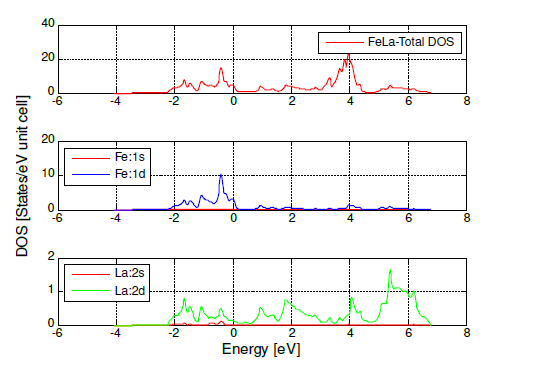Structural, electronic and optical properties of theFeAs(1-x)La(x) ternary alloys: a first principles calculations
Keywords:
FP-LAPW, , DFT, , FeAs(1-x)La(x), , Ternary alloys, , Superconductors, WIEN2K.Abstract
This study investigates the structural, electronic, and optical properties of FeAs(1-x)La(x) alloys (x = 0, 0.25, 0.5, 0.75, 1) using the FP-LAPW method within the framework of density functional theory (DFT). The lattice parameter, bulk modulus, and its derivative were determined through Murnaghan’s equation of state, revealing deviations from Vegard's law with increasing lanthanum concentration. Analysis of the electronic band structure and refractive indices highlights changes in the band gap, while energy-volume relationships indicate stability in the Zinc-Blende structure. Further exploration of the orthorhombic phase is suggested to confirm the structural properties. Doping FeAs with rare-earth elements introduces significant challenges due to disparities in ionic size, charge, and chemical behavior, yet it can profoundly impact structural, electronic, and superconducting properties such as charge carrier density and lattice parameters. The results emphasize the importance of precise control over doping concentrations and preparation techniques to achieve stable compounds. This theoretical work underscores the potential of FeAs-based materials for advanced applications, paving the way for further experimental validation.

Published
How to Cite
Issue
Section
Copyright (c) 2025 F. L. Kherfane, A. BOUKRAA, B. Beladel, A. Douara, I. E. Tibermacine, A. Rabehi, M. Benghanem (Author)

This work is licensed under a Creative Commons Attribution 4.0 International License.







